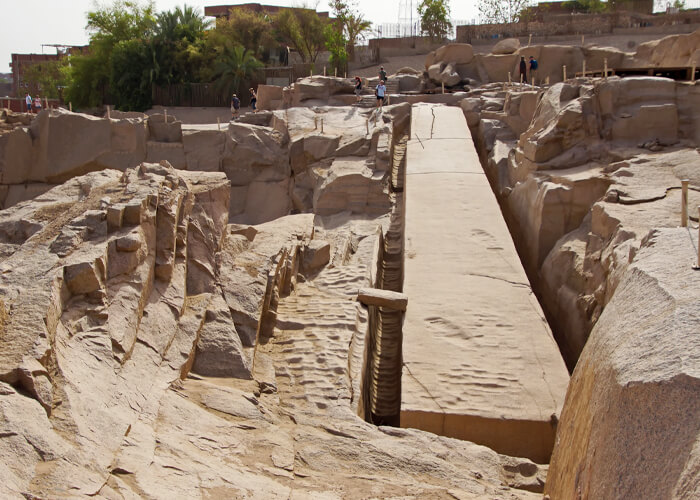This project has not yet been completed: the Obelisk of Aswan.
As a wayfinding tool, the Ancient Egyptian Obelisks were very significant since they stood at the entrances of temples, generally in pairs.
For the most part, they used red granite, which was quarried from the granite rock near the Nile and then sent to their ultimate destinations in Cairo and Alexandria by ship.
Directions:
Located only 7 minutes from the city centre of Aswan and 3 hours from Luxor, the hotel is at an ideal location.
History:
It was cut from the bedrock and abandoned after discovering a flaw in the stone.
If it had been finished, the obelisk would have weighed 1168 tonnes and stood 42 metres high.
The so-called Lateran Obelisk in Rome, which once stood in front of Tuthmosis III’s temple at Karnak and is today recognised as the largest obelisk in the world, is thought by some academics to be a companion piece to this one.
For example, the use of wooden wedges to split fissures and the abradant usage of quartz sand slurry have been documented by researchers via the use of chisel marks and abandoned quarrying equipment.
Quarry workers painted dolphins and ostriches on the walls of the quarries hundreds of years ago, so visitors may see them as they make their way through the mines.
Facts worth noting:
In fact, there are more Obelisks in existence now than there were when they left Egypt because of the purchasing by various governments and shipment to other countries.
Rome, Paris, London, Istanbul, Israel and New York City are just a few of the major cities where they have been displayed prominently in addition to countless more that remain in place at temples and other spots around the nation (8 in total left in Egypt).

